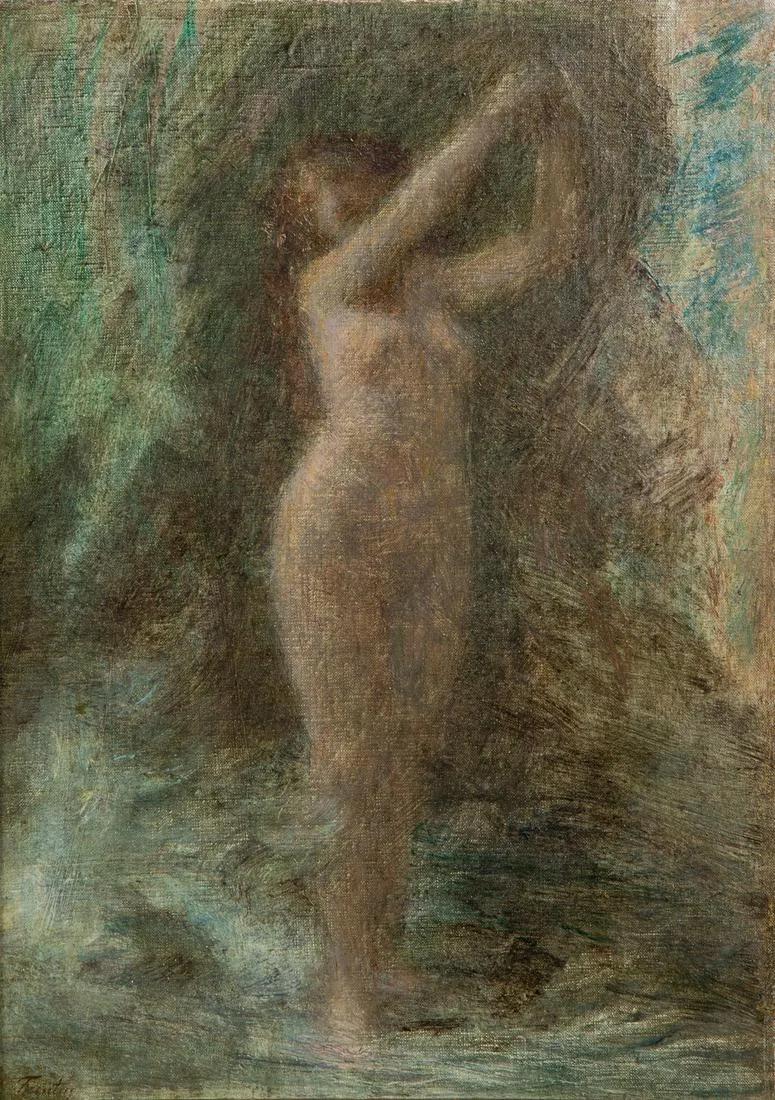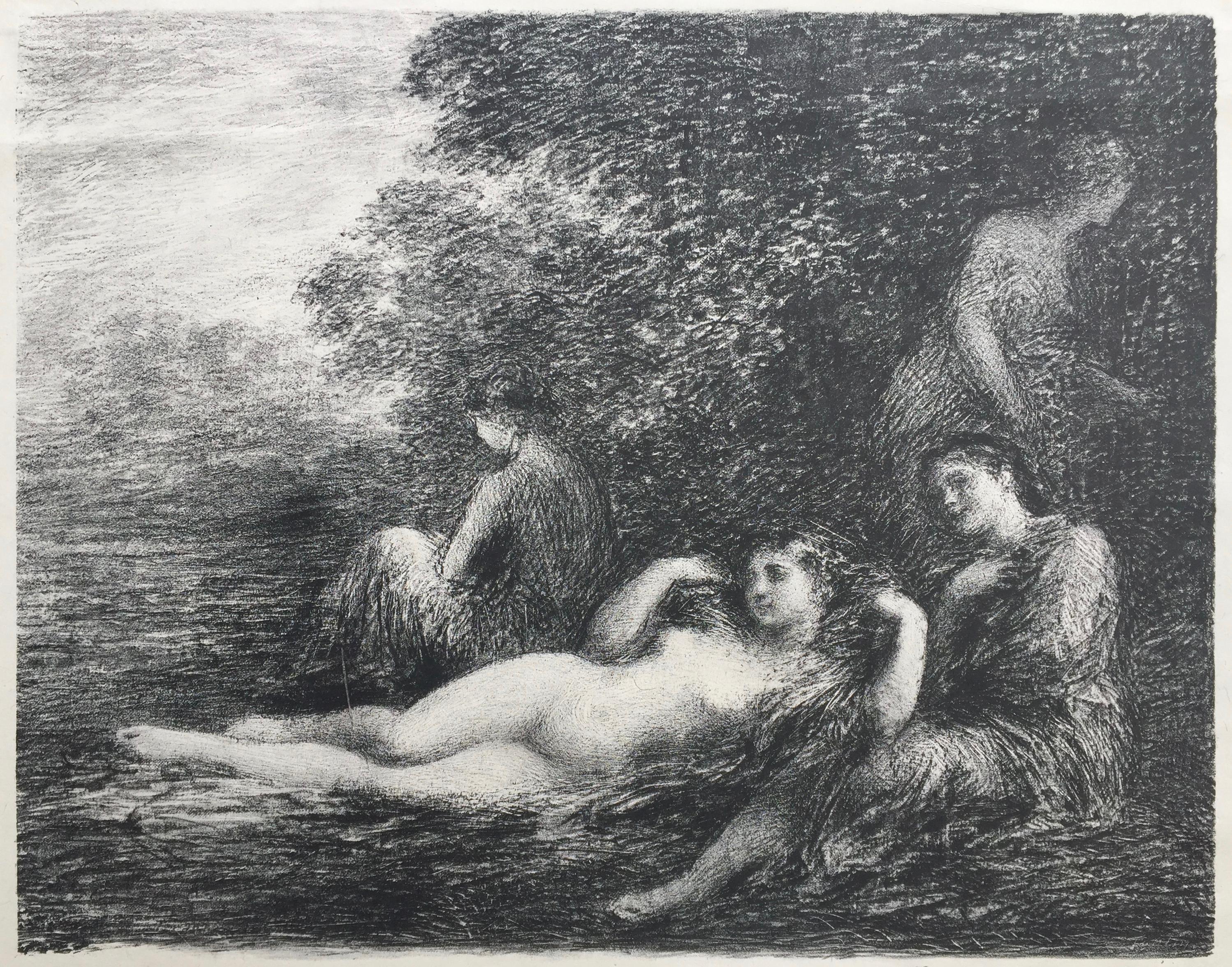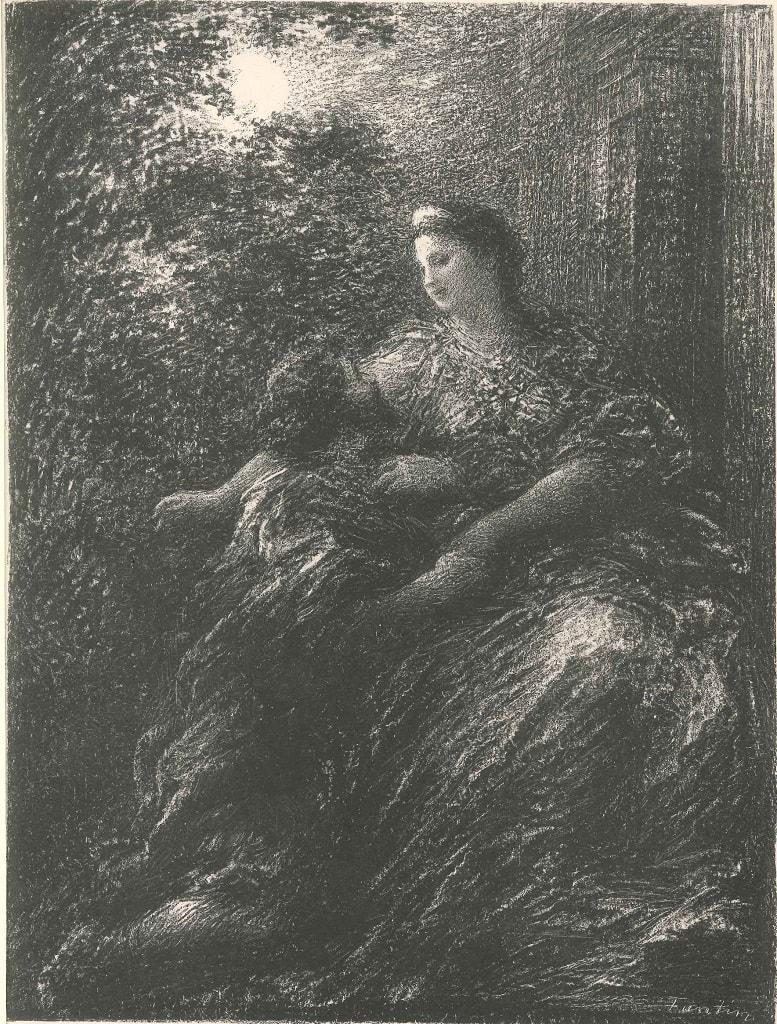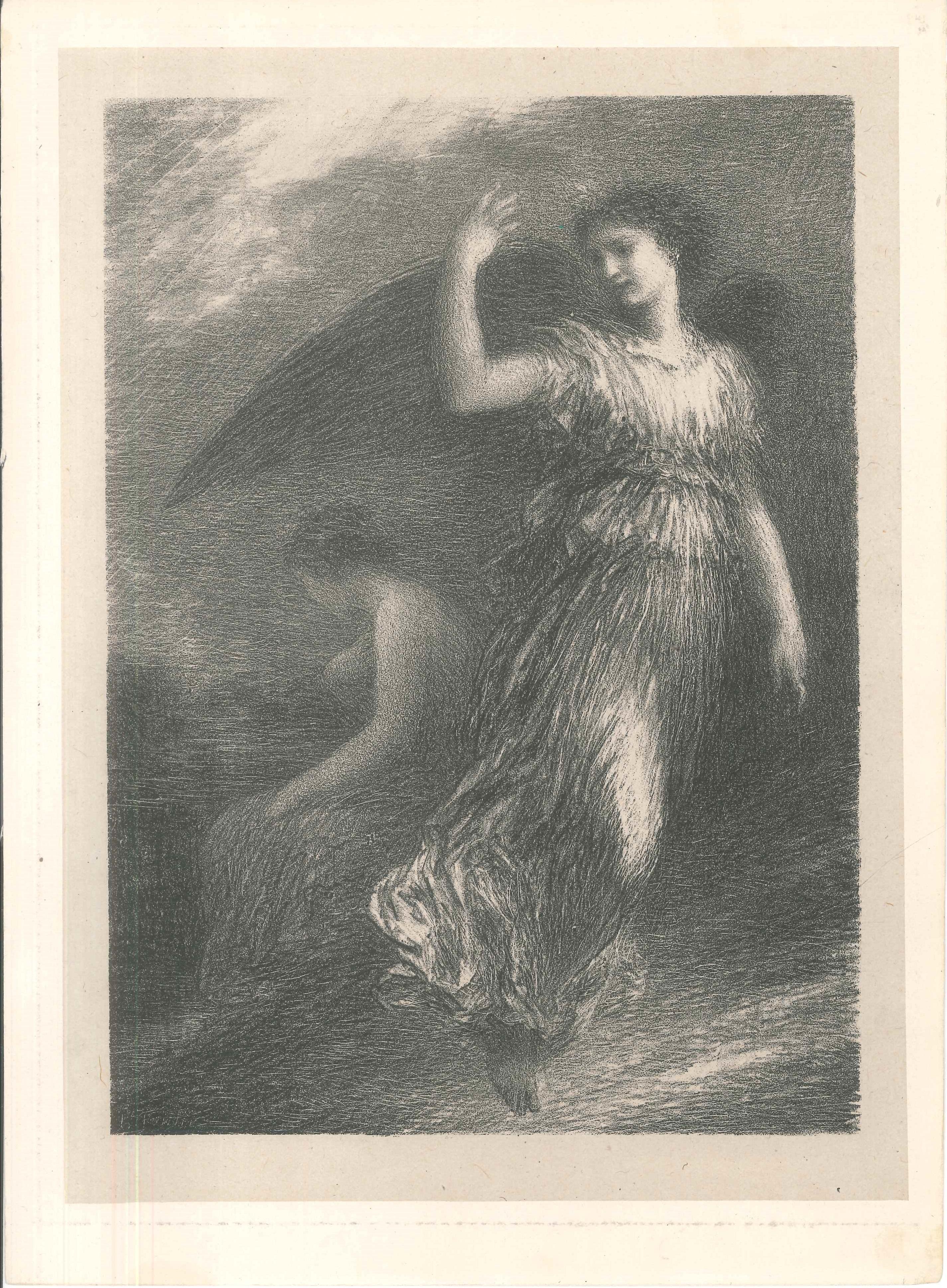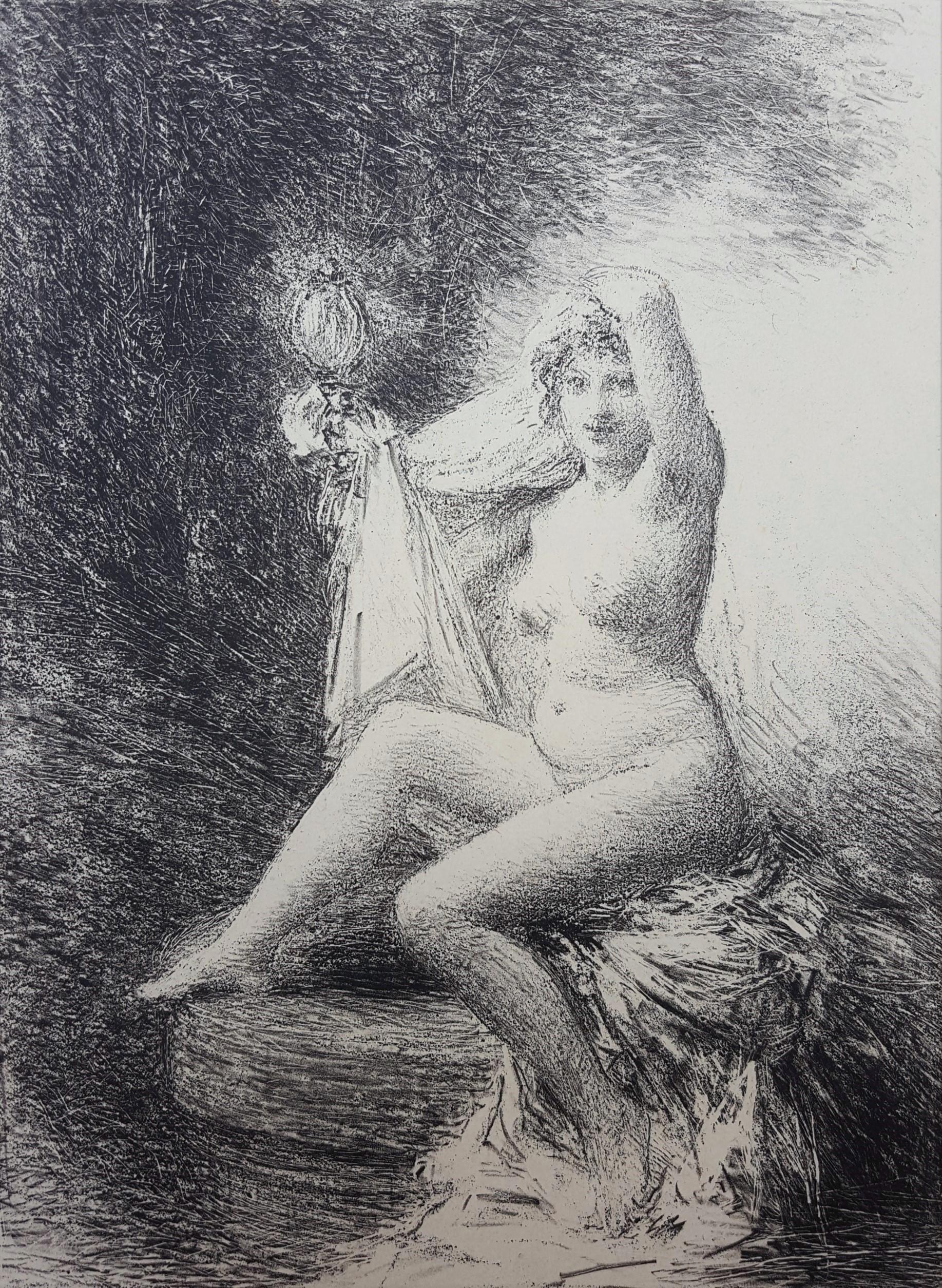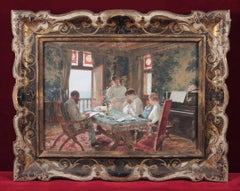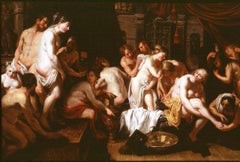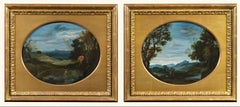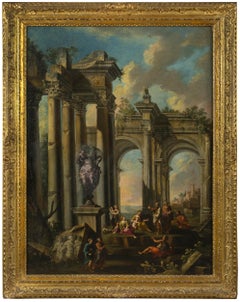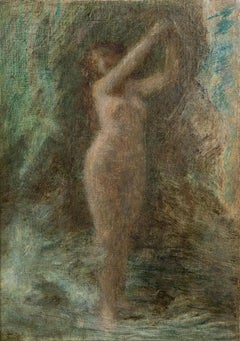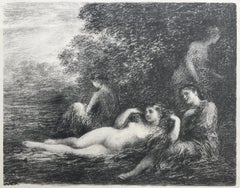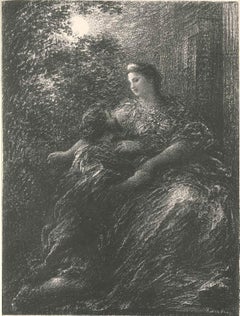Items Similar to Orientale
Want more images or videos?
Request additional images or videos from the seller
1 of 5
Henri Fantin-LatourOrientale1899
1899
$28,750
£22,078.76
€25,301.99
CA$40,472.90
A$45,338.59
CHF 23,625.54
MX$553,037.24
NOK 300,226.42
SEK 283,092.11
DKK 188,847.14
About the Item
Signed, lower right: Fantin
Provenance:
Gustave Tempelaere (1840–1904), Paris; possibly by descent to his son:
Julien Tempelaere (1876–1961) and with F. & J. Tempelaere, Paris, probably stock number 4465 ; where acquired by:
Alexander Reid (1854–1928), Glasgow and with the Lefèvre Gallery
Private Collection, Montreal, before 1981; and by descent to:
Private Collection, Connecticut
Literature:
Madame Fantin-Latour, Catalogue de l’œuvre complet (1849-1904) de Fantin-Latour, établi et rédigé, Paris, 1911, p. 189, cat. no. 1764.
Henri Fantin-Latour began his artistic training early in life, first with his father, Jean-Théodore Fantin-Latour, in 1846 and later studying at the Petite Ecole de Dessin and the Ecole des Beaux-Arts. Fantin-Latour was at the center of the art scene in Paris and he befriended the likes of Édouard Manet, Eugène Delacroix, J.-A.-D. Ingres, Camille Corot, and Gustave Courbet. Despite his proximity to the many of the leading painters of the day, Fantin-Latour’s style remained independent but clearly influenced by the major artistic currents of Romanticism and Impressionism. His aesthetic and style do not fit neatly into one category but were certainly in line with the cutting-edge trends of the time. During his lifetime he exhibited at both the Salon and the Salon des Refusés, and through his acquaintance with James McNeill Whistler, his works were greatly appreciated and found an audience of enthusiastic collectors in England.
While he is perhaps best-known today for his still-life painting, Fantin-Latour painted in a wide range of genres, including allegorical and mythological works. The subject of the present work is somewhat enigmatic. Although it is titled Orientale in the catalogue of works assembled by the artist’s wife, Victoria Fantin-Latour, the subject is only broadly “Orientalist.” Rather it seems to be a personal evocation of an exotic world distant from fin-de-siècle France. The central figure, her arm and hip belt adorned with jewelry, has removed her top shawl and spun it about her naked torso, her right leg moving forward in a sinuous suggestion of a dance. She is accompanied by musicians playing a guitar, tambourine, and drum in a scene that at once recalls that of a Middle Eastern harem, though the setting is one of classical architecture replete with Corinthian columns. Three figures observe the performance, including a woman reclining on the floor, her bare back exposed to the viewer.
Fantin-Latour frequently depicted semi-nude women in relaxed poses, but in 1898 and 1899, he was particularly taken by the subject of women dancing and making music in classical settings. He produced a lithograph of 1898 (Fig. 1), as well as two paintings on canvas—one in the Glasgow Museums (Fig. 2) and another in a private collection (Fig. 3)—that are comparable in type to the present work—each titled The Dance. Consistent among them is the focus on the single, scantily clad dancer that waves a swath of purple fabric behind them. The backgrounds of the paintings are each populated with classical columns that frame glimpses of landscape beyond. In our work, the figures surrounding the dancer are grouped closely together in a tight but harmonious composition. The rich colors of the draperies—purple, blue, red, and gold—stand out in the somewhat dark interior, each appearing to catch glints of light.
Fantin-Latour’s sensitivity to color and light effects finds its root in his early training copying Old Master paintings—particularly his appreciation for the Venetian painters Titian and Veronese—as well as the influence of his Impressionist painter friends. The dramatic lighting and the application of the paint in almost hatched brushstrokes, lending a beautiful sketchy quality to the present work, are both characteristic of some of the artist’s finest figural paintings.
Henri Fantin-Latour’s authorship of this painting has been confirmed by Sylvie Brame and François Lorenceau, authors of the forthcoming catalogue raisonné of the artist (written communication, 4 May 1996 and 25 May 2021).
Henri Fantin-Latour
Henri Fantin-Latour, in full Ignace-Henri-Jean-Théodore Fantin-Latour (born Jan. 14, 1836, Grenoble, France—died Aug. 25, 1904, Buré), French painter, printmaker, and illustrator noted for his still lifes with flowers and his portraits, especially group compositions, of contemporary French celebrities in the arts. Fantin-Latour’s first teacher was his father, a well-known portrait painter. Later, he studied at the school of Lecoq de Boisbaudran and attended the École des Beaux-Arts. He exhibited at the official French Salons, but in 1863 he also showed his work in the rebel Salon des Refusés. Although academic in manner, Fantin-Latour was independent in style. He had numerous friends among the leading French painters of his day, including J.-A.-D. Ingres, Eugène Delacroix, Camille Corot, Édouard Manet, and Gustave Courbet. His portrait groups, often arranged in rows of heads and figures like 17th-century Dutch guild portraits, are perhaps most interesting for their portrayal of various literary and artistic persons of the time. Fantin-Latour’s flower paintings were particularly appreciated in England, where, through James McNeill Whistler and Sir John Everett Millais, Fantin-Latour found a patron in Edwin Edwards. A wealthy amateur engraver, he supported Fantin-Latour for years by purchasing his still lifes. The last period of Fantin-Latour’s life was primarily devoted to lithography. In the Salon of 1876 he exhibited L’Anniversaire, honouring composer Hector Berlioz, and thereafter his lithographs were shown regularly. Most characteristic were his delicate portraits and imaginative drawings illustrative of the music of Richard Wagner, Berlioz, and others. He also illustrated Adolphe Jullien’s biographies of Wagner (1886) and Berlioz (1888).
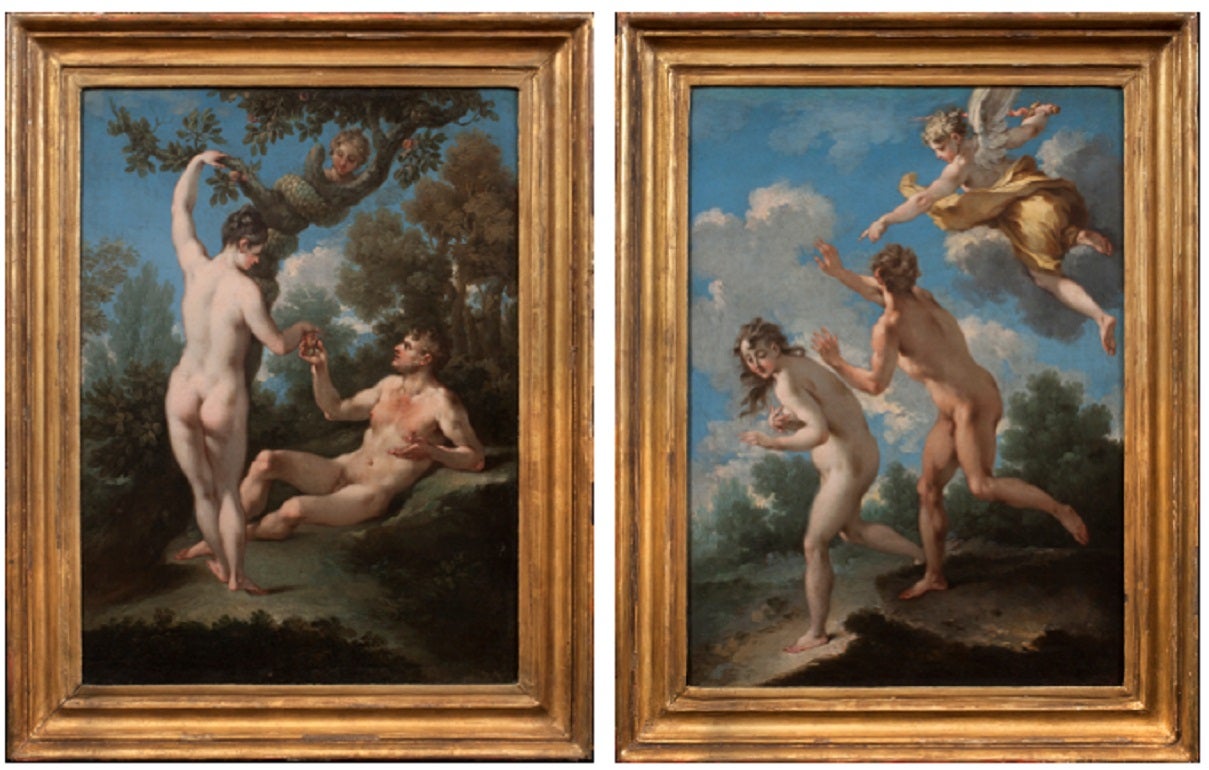
About the Seller
5.0
Recognized Seller
These prestigious sellers are industry leaders and represent the highest echelon for item quality and design.
Established in 1997
1stDibs seller since 2012
22 sales on 1stDibs
Typical response time: 5 hours
- ShippingRetrieving quote...Shipping from: New York, NY
- Return Policy
Authenticity Guarantee
In the unlikely event there’s an issue with an item’s authenticity, contact us within 1 year for a full refund. DetailsMoney-Back Guarantee
If your item is not as described, is damaged in transit, or does not arrive, contact us within 7 days for a full refund. Details24-Hour Cancellation
You have a 24-hour grace period in which to reconsider your purchase, with no questions asked.Vetted Professional Sellers
Our world-class sellers must adhere to strict standards for service and quality, maintaining the integrity of our listings.Price-Match Guarantee
If you find that a seller listed the same item for a lower price elsewhere, we’ll match it.Trusted Global Delivery
Our best-in-class carrier network provides specialized shipping options worldwide, including custom delivery.More From This Seller
View AllLeisure Moments (Interior Scene)
By Julius Schmid
Located in New York, NY
Charming watercolor of an intimate family scene in beautiful painted period frame. Signed in the lower right-hand corner.
Category
Early 19th Century Paintings
Materials
Watercolor
Esther in the Women's House of Ahasuerus
By Artus Wolfort
Located in New York, NY
Born in Antwerp, Artus Wolffordt received his training in Dordrecht where he became a master in 1603 at the age of twenty-two. He returned to his native city in 1615 and initially worked as an assistant to Otto van Veen...
Category
17th Century Old Masters Paintings
Materials
Oil, Panel
Two Scenes of Diana and Actaeon (a pair)
By Giovanni Battista Viola
Located in New York, NY
Provenance:
Robert L. and Bertina Suida Manning, New York, until 1996
Private Collection, USA
Giovanni Battista Viola was born in Bologna a...
Category
17th Century Baroque Landscape Paintings
Materials
Copper
An Architectural Capriccio with the Preaching of an Apostle
By Giovanni Paolo Panini
Located in New York, NY
Provenance: Santambrogio Antichità, Milan; sold, 2007 to:
Filippo Pernisa, Milan; by whom sold, 2010, to:
Private Collection, Melide, Switzerland
De Primi Fine Art, Lugano, Switzerland; from whom acquired, 2011 by:
Private Collection, Connecticut (2011-present)
Literature: Ferdinando Arisi, “Ancora sui dipinti giovanili del Panini,” Strenna Piacentina (Piacenza, 2009): pp. 48, 57, 65, fig. 31, as by Panini
Ferdinando Arisi, “Panini o Ghisolfi o Carlieri? A proposito dei dipinti giovanili,” Strenna Piacentina, (Piacenza, 2010), pp. 100, 105, 116, fig. 101, as an early work by Panini, a variant of Panini’s painting in the Museo Cristiano, Esztergom, Hungary.
This architectural capriccio is one of the earliest paintings by Giovanni Paolo Panini, the preeminent painter of vedute and capricci in 18th-century Rome. The attribution to Panini has been endorsed by Ferdinando Arisi, and a recent cleaning of the painting revealed the artist’s signature in the lower right. Like many of his fellow painters working in Rome during his day, Panini was not a native of the Eternal City. He first trained as a painter and stage designer in his hometown of Piacenza and moved to Rome at the age of 20 in November 1711 to study figure painting. Panini joined the workshop of Benedetto Luti (1666-1724) and from 1712 was living on the Piazza Farnese. Panini, like many before and after him, was spellbound by Rome and its classical past. He remained in the city for the rest of his career, specializing in depicting Rome’s most important monuments, as well as creating picturesque scenes like this one that evoked the city’s ancient splendor.
The 18th century art historian Lione Pascoli, who likely knew Panini personally, records in his 1730 biography of the artist that when Panini came to Rome, he was already “an excellent master and a distinguished painter of perspective, landscape, and architecture.” Panini’s earliest works from this period still show the evidence of his artistic formation in Piacenza, especially the influence of the view painter Giovanni Ghisolfi (1623-1683). However, they were also clearly shaped by his contact in Rome with the architectural capricci of Alberto Carlieri...
Category
18th Century Old Masters Figurative Paintings
Materials
Canvas, Oil
Allegory of Abundance
Located in New York, NY
Painted in collaboration with Hendrick van Balen (Antwerp, 1575 – 1632).
Provenance: Private Collection, Uruguay, since the 1930s.
The eldest son of Jan Br...
Category
17th Century Old Masters Paintings
Materials
Copper
Head of the Virgin
Located in New York, NY
Provenance: Private Collection, Paraguay.
This unpublished Head of the Virgin is a new addition to the rich corpus of paintings by Giovanni Battista Tiepolo. While the artist freque...
Category
18th Century Old Masters Figurative Paintings
Materials
Oil, Canvas
You May Also Like
Andromède
By Henri Fantin-Latour
Located in Barbizon, FR
"Andromède" Oil on canvas, signed in the bottom right corner, 1904.
Origin:
Galerie F&J. Templaere, Paris,
Collection Achille Raymond, Grenoble in 1936
Sale at Christie's, New York,...
Category
Early 20th Century Barbizon School Nude Paintings
Materials
Canvas, Oil
Vérité (petite planche)
By Henri Fantin-Latour
Located in New York, NY
Henri Fantin-Latour (1836-1904),Vérité (petite planche), 1900, lithograph. Hediard-Mason 156, first state (of 3). A proof of the first state before the edition published in La Revue...
Category
Early 1900s Impressionist Nude Prints
Materials
Lithograph
BAIGNEUSES
By Henri Fantin-Latour
Located in Santa Monica, CA
HENRI FANTIN-LATOUR (French 1836-1904)
BAIGNEUSES (4e grande planche), 1898 (Hediard 138 II/II)
It’s one of 6 works that formed a suite of images published ...
Category
1890s French School Figurative Prints
Materials
Lithograph
$650 Sale Price
31% Off
Duo des Troyens
By Henri Fantin-Latour
Located in Roma, IT
Beautiful lithograph on Chinese paper, hand signed on plate on the lower right margin. Third state on four. Excellent conditions, including an ivory colored cardboard passepartout 47...
Category
1890s Modern Figurative Prints
Materials
Lithograph
Le Paradis et la Péri - Lithograph by Henri Fantin-Latour - 1901
By Henri Fantin-Latour
Located in Roma, IT
Le Paradis et la Péri is a wonderful black and white lithograph on China paper applied, realized in 1901 by the French artist Henri Fantin-Latour (Grenoble, 1836- Buré 1906).
From Robert Schumann...
Category
Early 1900s Modern Figurative Prints
Materials
Lithograph
Vérité (Truth) /// French Modern Impressionist Art Lithograph Nude Figurative
By Henri Fantin-Latour
Located in Saint Augustine, FL
Artist: Henri Fantin-Latour (French, 1836-1904)
Title: "Vérité (Truth)"
Portfolio: Revue de l'Art Ancien & Moderne
*Issued unsigned
Year: 1900 (third state of three)
Medium: Original Lithograph on chine appliqué on wove paper
Limited edition: Unknown
Printer: A. Clot, Paris, France
Publisher: Revue de l'Art Ancien & Moderne, Paris, France
Reference: Floury No. 156; Hediard-Mason No. 156; L No. 139
Sheet size: 11.5" x 8.5"
Image size: 7.5" x 5.5"
Condition: In excellent condition
This review was founded in 1897 in the continuity of the review Les Beaux-Arts published between 1861 and 1865; Jules Comte, the founder, entitled his first issue Les Beaux-Arts - Revue nouvelle then changed the title to La Revue de l'art ancien et moderne. Jules Comte directed the review until his death in 1912. Raymond Woog took over , who was provisional director until the start of the war in July 1914. In 1919, André Dezarrois took over this review and was its director until December 1937, date of last issue (published in January 1938). In the meantime, it publishes the Bulletin of ancient and modern art, which has gained a certain notoriety in the community.
Biography:
Henri Fantin-Latour, in full Ignace-Henri-Jean-Théodore Fantin-Latour (born Jan. 14, 1836, Grenoble, France—died Aug. 25, 1904, Buré), French painter, printmaker, and illustrator noted for his still lifes with flowers and his portraits, especially group compositions, of contemporary French celebrities in the arts.
Fantin-Latour’s first teacher was his father, a well-known portrait painter. Later, he studied at the school of Lecoq de Boisbaudran and attended the École des Beaux-Arts. He exhibited at the official French Salons, but in 1863 he also showed his work in the rebel Salon des Refusés.
Although academic in manner, Fantin-Latour was independent in style. He had numerous friends among the leading French painters of his day, including J.-A.-D. Ingres, Eugène Delacroix, Camille Corot, Édouard Manet, and Gustave Courbet. His portrait groups, often arranged in rows of heads and figures like 17th-century Dutch guild...
Category
Early 1900s Impressionist Nude Prints
Materials
Lithograph
More Ways To Browse
Gold Whistle
Whistler Lithograph
Still Life With Guitar
Eugene Jewelry
Antique France Shawls
1876 Jewelry
Venetian Lithograph
Antique Guitar
Antique Guitars
Fig Still Life
Back Of Naked Woman Painting
Theodore Major
Orientalist Lithograph
Whistle Jewelry
Guitar Jewelry
Henri Fantin Latour
Spun Gold Jewelry
Antique Lighting Glasgow
